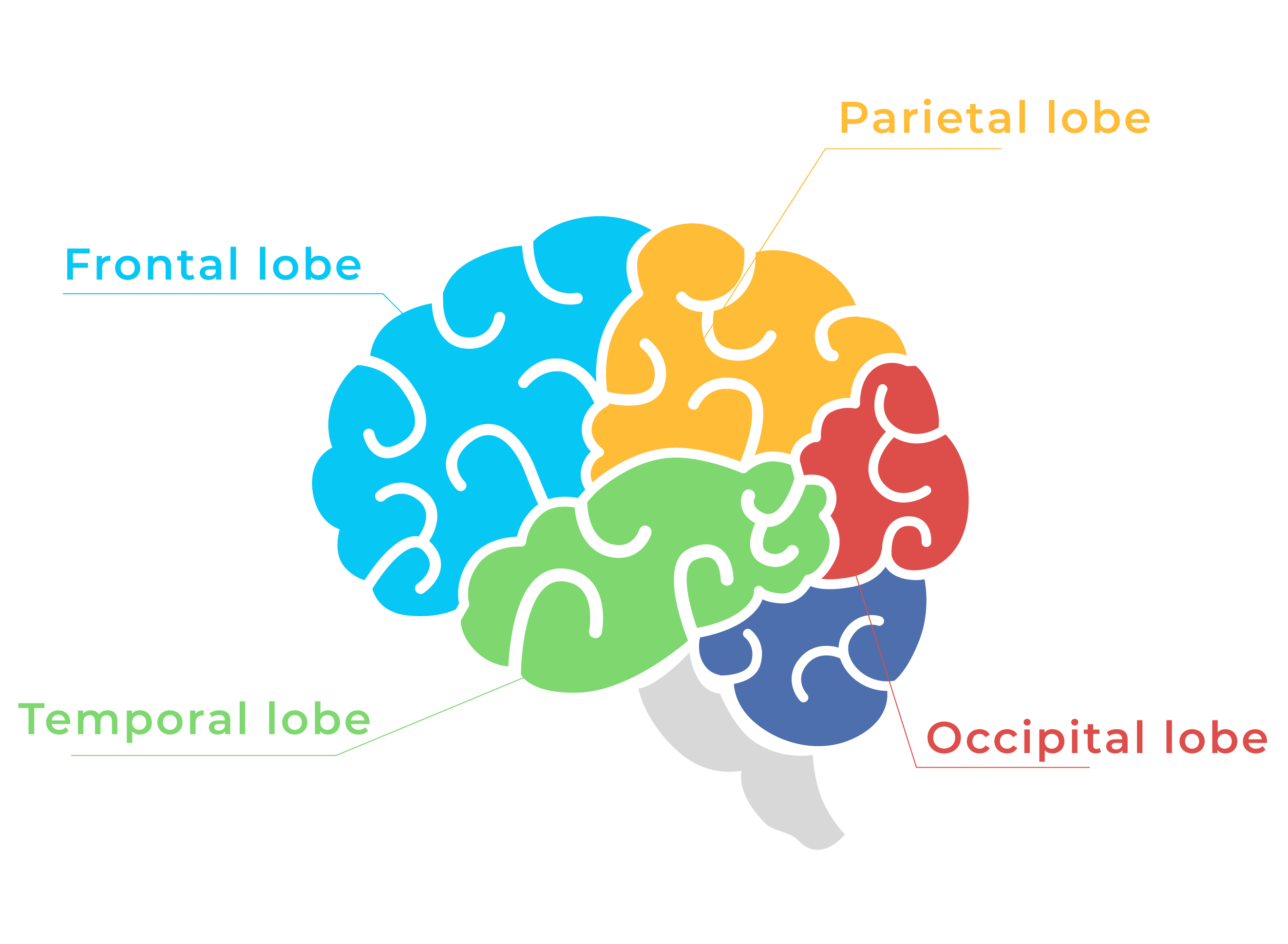Squeezing The BRAIN
Before understanding different type of questions what you can use to assess people, it is wise to know how does our brain works and which part of the brain is responsible for what? Then we will get into the key words and questioning type which are useful to assess someone intelligence.
We have gone through several reference websites and tried to abstract how brain works which are relevant for a learning designer. The information provided below are curated for easy reference.
KNOW YOUR BRAIN
First thing you should know is about cerebrum. The cerebrum is the largest part of the brain and is responsible for most of its functioning.

“ Each cerebral hemisphere can be divided into sections, or lobes, each of which specializes in different functions. To understand each lobe, we will take a look at the cerebral hemispheres by exploring the different section of the brain.
1. Frontal Lobe
This area is responsible for problem solving, behavior, judgment, creative thinking, smell, personality, muscle movements, physical reactions, and attention
When you plan a schedule, imagine the future, or use reasoned arguments, these lobes do much of the work. One of the ways the frontal lobes seem to do these things is by acting as short-term storage sites, allowing one idea to be kept in mind while other ideas are considered.
2. Parietal Lobe
When you enjoy a good meal—the taste, aroma, and texture of the food—two sections behind the frontal lobes called the parietal lobes are at work. Reading and arithmetic are also functioning in the repertoire of each parietal lobe.
3. Occipital Lobe
As you look at the words and pictures on this page, two areas at the back of the brain are at work. These lobes, called the occipital lobes, process images from the eyes and link that information with images stored in memory.
4. Temporal Lobe
The last lobes on our tour of the cerebral hemispheres are the temporal lobes, which lie in front of the visual areas and nest under the parietal and frontal lobes. Whether you appreciate symphonies or rock music, your brain responds through the activity of these lobes.
At the top of each temporal lobe is an area responsible for receiving information from the ears. The underside of each temporal lobe plays a crucial role in forming and retrieving memories, including those associated with music. Other parts of this lobe seem to integrate memories and sensations of taste, sound, sight, and touch.
In the rearmost portion of each frontal lobe is a motor area, which helps control voluntary movement. A nearby place on the left frontal lobe called Broca’s area allows thoughts to be transformed into words.
Now as you skim through the different areas of brain responsible for functions, let’s list down different questioning types and for what purpose it can be leveraged in brief.
- Recall and Process question (Suitable for interview)
- Open ended (finding out more information about a person or subject)
- Closed questions (warm up engagement)
- Probing questions (seeing the bigger picture)
- Leading questions (building positive discussion)
- Loaded questions (Discovering facts)
- Funnel questions (Building relationship)
- Rhetorical questions (Building engagement)
Question type 1 and 4 are most asked type question when you design a technical assessment for hiring people.
Question type 2, 3 and 6 are most used in designing a psychometric assessment to predict people behavior.
Question type 5, 7 and 8 are most used in a one on one interview discussions.
In our next blog Magical keywords for designing an assessment, we will try to list down possible keyword that can be used to frame question for assessing people on various skills like critical thinking, logical reasoning and problem solving using a technical assessment.